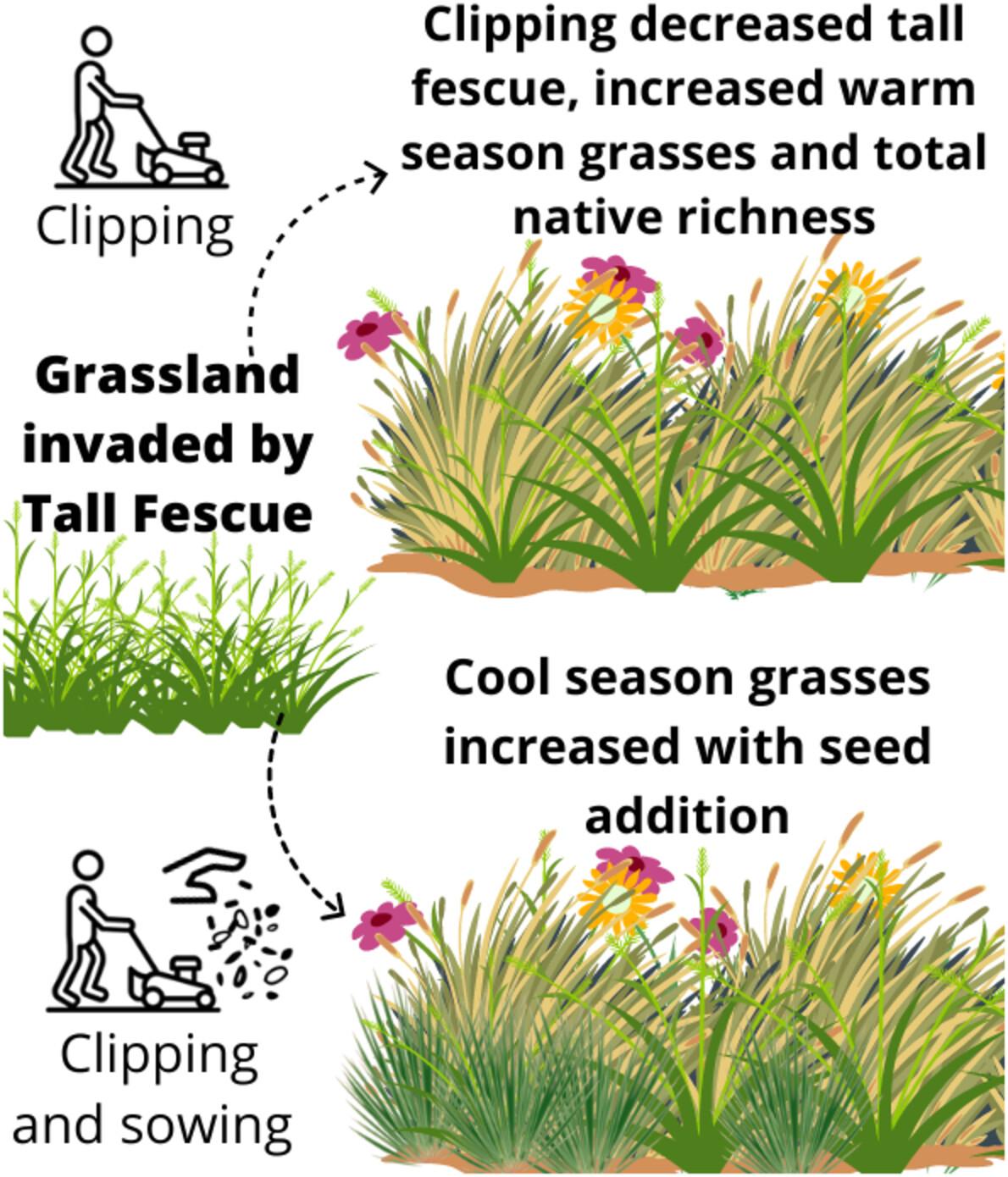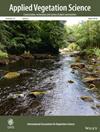Restoration of invaded temperate grasslands: species phenology adds to microsite and seed availability
Abstract
Questions
Restoring diversity in temperate grasslands requires eliminating invaders and recovering different native phenological groups. Clipping and seed addition promote native grass recovery, but these effects could depend on the phenological overlap between invaders and native species. We evaluated the importance of the interaction between two types of clipping, species phenology and sowing to restore temperate grasslands invaded by the cool-season forage species Festuca arundinacea (tall fescue).
Location
Flooding Pampa grassland (Buenos Aires, Argentina).
Methods
We applied selective and non-selective clipping on tall fescue during the peak growing season, combined with the sowing of native cool- and warm-season grasses. Plant species cover was estimated visually for 3 years; species were categorized by functional groups. Moreover, through emergence trials, we evaluated whether the soil seed bank had been impoverished by invasion.
Results
Regardless of selectivity, clipping decreased tall fescue cover by 12%/year, which reduced microsite limitation. Consequently, total native richness increased by 5 spp./year and cover increased from 3% to 50% by the last experimental year, independent of clipping type. Moreover, native warm-season grasses, the group with the least phenological overlap with invaders, increased by nearly 25% in cover and by 5 spp./m2 with clipping and independently of sowing. Contrarily, native cool-season grasses, with more phenological overlap with invaders, increased 5% with propagule addition. Furthermore, the seed bank was enriched with tall fescue and depleted of cool-season grasses.
Conclusions
Our results reveal that overcoming microsite limitation is a necessary condition to restore plant diversity in grassland invaded by tall fescue. Nevertheless, seed limitation and phenological overlap may be particularly important to restore the diversity of some native functional groups of plants. Considering the phenology of species can help to identify either clipping targets or phenological groups to be sown when restoring native diversity.


 求助内容:
求助内容: 应助结果提醒方式:
应助结果提醒方式:


